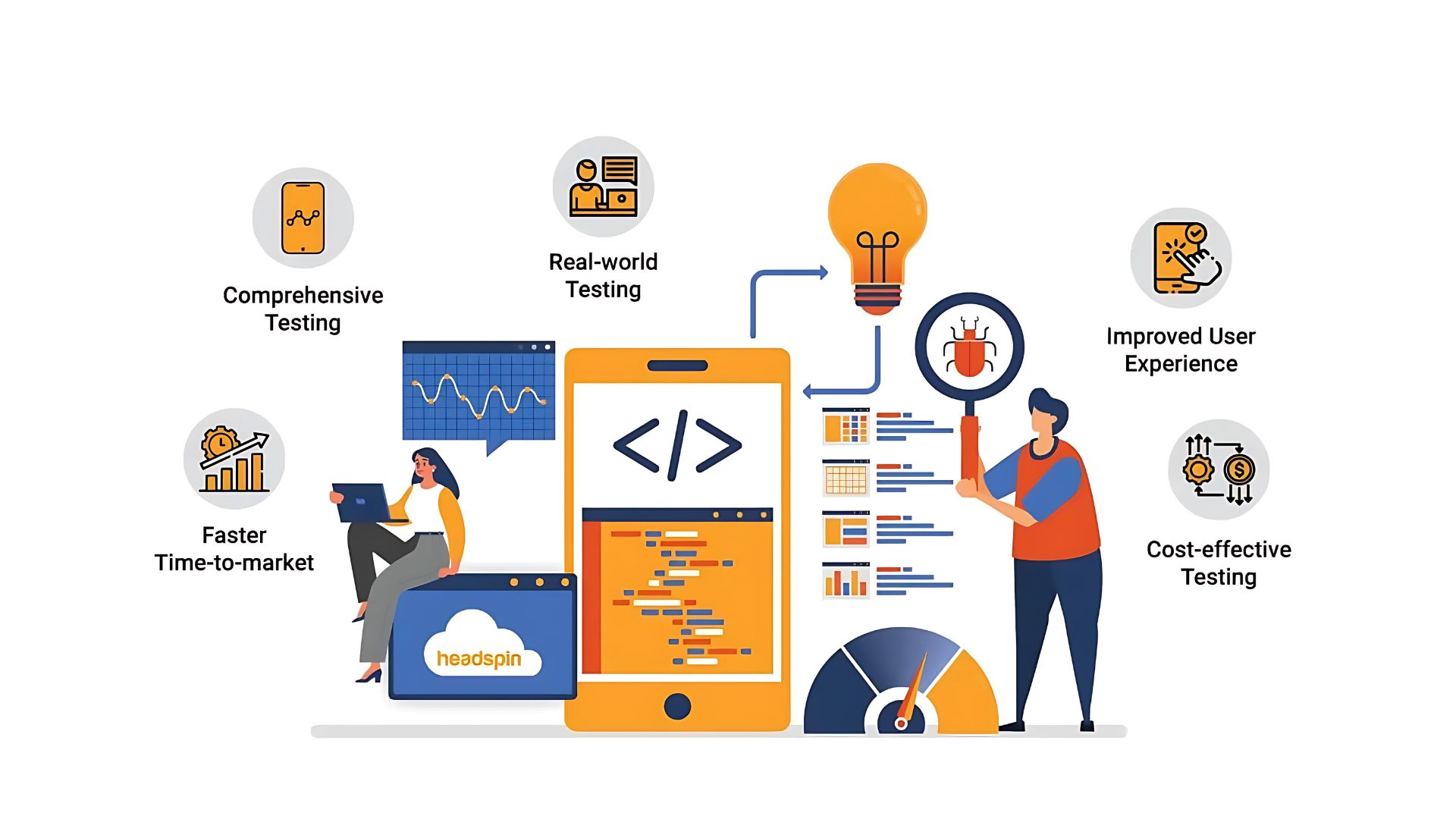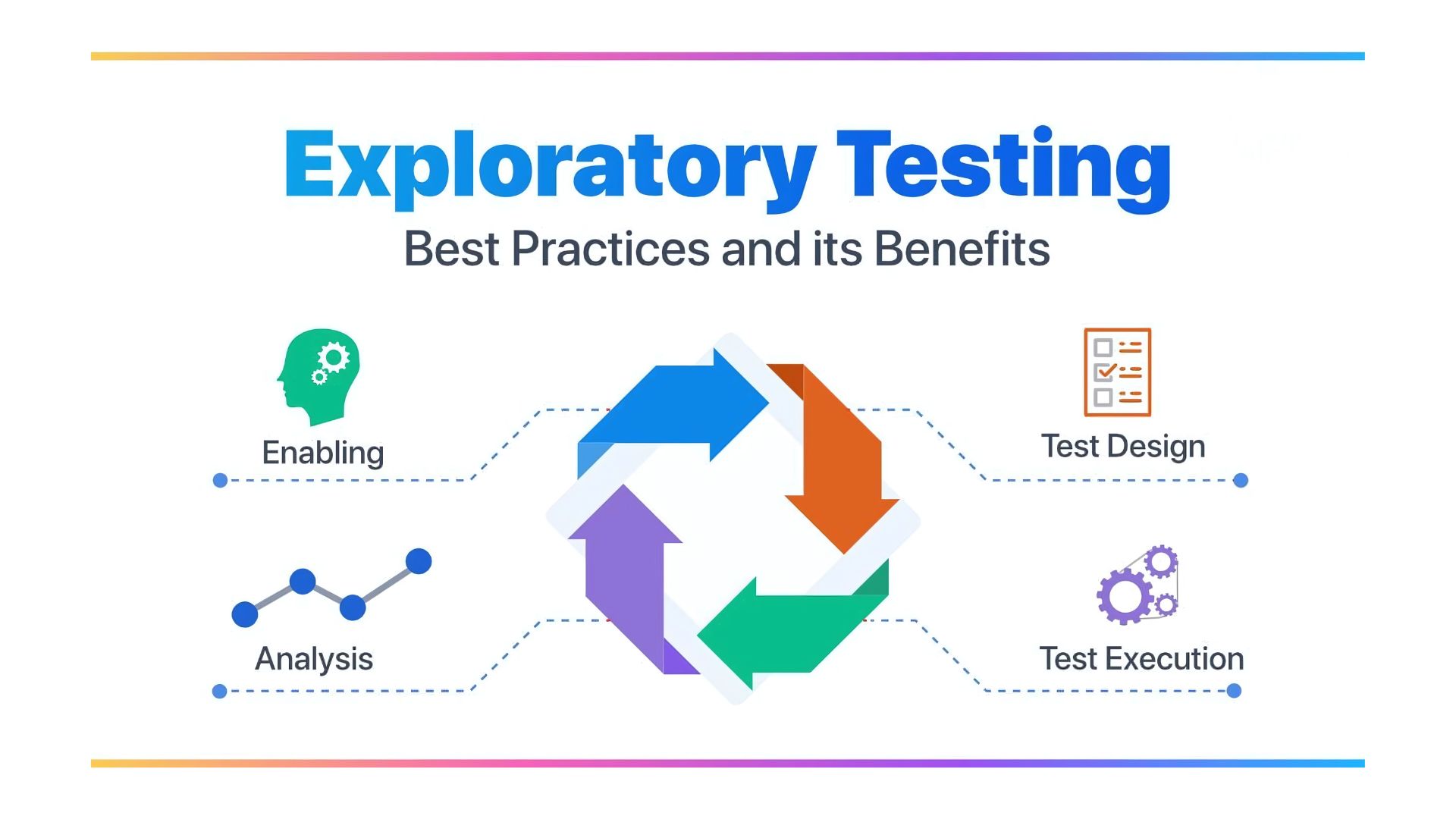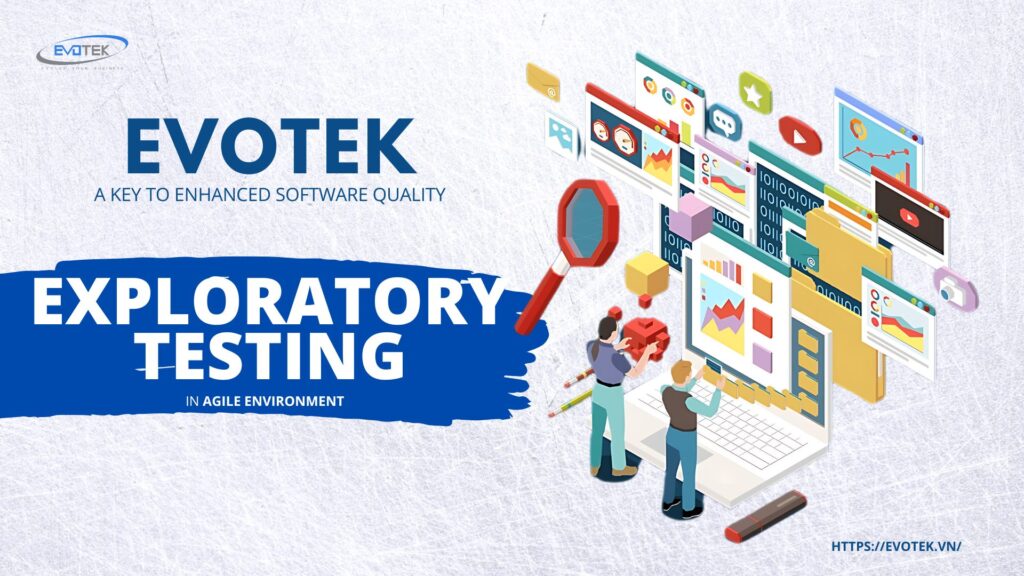Nếu kiểm thử tự động (automated testing) là “xương sống” của kiểm thử linh hoạt (Agile testing), thì kiểm thử thăm dò (exploratory testing) chính là “trái tim”.
Kiểm thử thăm dò tìm cách hiểu rõ “tại sao” (Why) và “như thế nào” (How) về trải nghiệm người dùng (UX). Nó không chỉ kiểm tra chức năng, mà còn khám phá sâu sắc nhu cầu, mong muốn và hành vi của người dùng để đảm bảo rằng sản phẩm đạt được sự hài lòng tối đa.
Sự chuyển đổi sang các phương pháp phát triển phần mềm linh hoạt như Agile cũng đòi hỏi phải có tính linh hoạt trong đảm bảo chất lượng. Tính linh hoạt ở đây có nghĩa là cung cấp phản hồi và cập nhật trạng thái sớm và thường xuyên, đồng thời tích hợp vào quy trình phát triển lặp lại nhanh chóng của Agile. Các nhóm kiểm thử cần một giải pháp phù hợp với môi trường làm việc nhanh nhạy và linh hoạt, đồng thời cung cấp kiểm thử toàn diện cả về chức năng và trải nghiệm người dùng.
Hiểu về Kiểm thử thăm dò (exploratory testing)
Kiểm thử tự động đóng vai trò như “xương sống” của Agile, nhưng nó không phải lúc nào cũng có thể giải quyết được sự phức tạp trong việc phát hiện các khiếm khuyết liên quan đến khả năng sử dụng, hiệu suất, độ tin cậy và các số liệu chất lượng phần mềm khác.
Tự động hóa chỉ có thể cho bạn biết một khía cạnh giao diện người dùng đang hoạt động bình thường hay không, nhưng không thể nói cho bạn biết khía cạnh đó gây trải nghiệm như thế nào với người dùng. Để giành được thị phần, phần mềm của bạn buộc phải làm nhiều hơn việc “hoạt động bình thường”, nó phải đáp ứng được mong đợi và nhu cầu của người dùng.
“Trái tim” của nhà phát triển Agile chính là việc tham gia vào thử nghiệm khám phá, hay còn gọi là “kiểm thử thăm dò”.
Hầu hết những người thử nghiệm sẽ nói rằng “Kiểm thử thăm dò, đúng như tên gọi – thăm dò”, đó là sự khám phá sản phẩm để hiểu cách thức hoạt động và cách cải thiện hoặc sửa chữa sản phẩm. Tester có thể chọn ngẫu nhiên các chức năng muốn kiểm tra, đồng thời khám phá các tính năng, chức năng của phần mềm.. Mặc dù có thể mất thêm vài phút, nhưng những đặc tính này làm cho kiểm thử thăm dò trở nên vô cùng hữu ích đối với môi trường Agile.

Tại sao nên kết hợp kiểm thử thăm dò vào môi trường Agile
Theo nghiên cứu đã phát hiện ra rằng kiểm thử thăm dò có khả năng phát hiện ra nhiều lỗi hơn 11% so với kiểm thử tự động.
Ngoài ra, một lợi ích khác của kiểm thử thăm dò là nó ít gây ra những cảnh báo lỗi giả (false positives) hơn so với kiểm thử theo kịch bản truyền thống.
Khi kiểm thử, chúng ta không muốn mất quá nhiều thời gian để xác minh và sửa lỗi mà trên thực tế không phải là lỗi. Với kiểm thử thăm dò, vấn đề này được giảm thiểu đáng kể. Nó giúp chúng ta tập trung vào việc tìm ra và khắc phục những lỗi thực sự trong sản phẩm. Bên cạnh đó, khả năng phát hiện nhiều lỗi hơn nhưng không tốn quá nhiều thời gian cho những cảnh báo không đúng sự thật giúp chúng ta tiết kiệm được nhiều công sức.
Trong môi trường Agile với chu kỳ phát triển ngắn và yêu cầu liên tục thay đổi, việc kết hợp kiểm thử thăm dò trở nên vô cùng quan trọng. Nó cho phép đội ngũ phát triển phần mềm nhanh chóng phản ứng và thích ứng với những thay đổi yêu cầu, đồng thời đảm bảo chất lượng của sản phẩm. Các nhà phát triển không chỉ kiểm tra chức năng mà còn khám phá sâu hơn về trải nghiệm người dùng, giúp họ hiểu rõ hơn về mong đợi và nhu cầu của khách hàng.
Các nhà phân tích sẽ gọi đây là một chiến lược tầm nhìn dài hạn. Bằng cách đầu tư thời gian và nỗ lực vào kiểm thử thăm dò, các đội ngũ phần mềm có thể xây dựng được những sản phẩm chất lượng cao, đáp ứng tốt hơn nhu cầu của người dùng và từ đó đạt được thành công lâu dài trên thị trường.
Lợi ích của thử nghiệm thăm dò trong môi trường linh hoạt
Kiểm tra các quy trình phức tạp và kết quả khó đoán trước
Trong các ứng dụng hiện đại phức tạp, có nhiều quy trình và tính năng đan xen lẫn nhau. Các kịch bản kiểm thử truyền thống khó lường hết các trường hợp sử dụng và kết quả khó đoán trước. Kiểm thử thăm dò cho phép tester tự do khám phá các luồng công việc phức tạp và tìm ra các kết quả bất ngờ, sơ hở mà kịch bản tĩnh nhìn khó phát hiện.
Khám phá các điểm mù trong kiểm thử theo kịch bản
Các kịch bản kiểm thử thường được viết ra với quan điểm kỹ thuật và tập trung vào chức năng. Nhưng trong thực tế, người dùng thường gặp phải các vấn đề về trải nghiệm người dùng (UX) hoặc khả năng sử dụng không được đề cập trong kịch bản. Kiểm thử thăm dò cho phép khám phá các vấn đề UX này từ góc nhìn của người dùng.
Tài liệu hóa các vấn đề và thắc mắc về cải thiện chất lượng
Trong quá trình sử dụng sản phẩm, tester không chỉ ghi lại các lỗi phần mềm mà còn ghi chú lại các thắc mắc, vấn đề phát sinh trong quá trình sử dụng. Những tài liệu này rất hữu ích để hiểu rõ hơn về trải nghiệm người dùng và cải thiện chất lượng của sản phẩm.
Cung cấp góc nhìn của người dùng cuối
Một trong những lợi thế lớn nhất của kiểm thử thăm dò là nó cho phép tester trải nghiệm sản phẩm giống như một người dùng cuối thực sự, thay vì chỉ kiểm tra các chức năng kỹ thuật. Điều này giúp phát hiện ra những vấn đề mà người dùng thực sự gặp phải mà kịch bản kiểm thử định trước khó nhận ra.
Nhận diện lĩnh vực cần ưu tiên tự động hóa
Qua quá trình thử nghiệm, tester có thể xác định được những lĩnh vực, tính năng phức tạp, quan trọng hoặc có nhiều rủi ro cần được ưu tiên cho việc xây dựng các ca kiểm thử tự động hóa. Điều này giúp phân bổ nguồn lực hiệu quả hơn.
Phản hồi nhanh về các thành phần có rủi ro cao
Trong môi trường Agile, phản hồi nhanh về chất lượng của các thành phần mới hoặc thay đổi là rất quan trọng. Kiểm thử thăm dò cho phép tester nhanh chóng đánh giá và cung cấp phản hồi về chất lượng các thành phần có nguy cơ rủi ro cao, giúp đội phát triển đưa ra quyết định kịp thời.

Triển khai kiểm thử thăm dò trong môi trường Agile
Tích hợp kiểm thử thăm dò vào quy trình làm việc Agile đòi hỏi phải có sự thay đổi trong tư duy và nhận thức. Tester cần được coi là những nhân tố đóng góp quan trọng cho quá trình phát triển, mang đến những hiểu biết sâu sắc về hành vi của người dùng và chức năng của sản phẩm.

Để triển khai hiệu quả, các nhóm Agile nên áp dụng các chiến lược sau:
Tích hợp kiểm thử thăm dò ngay từ đầu
Kiểm thử thăm dò nên được xem xét và lên kế hoạch ngay từ giai đoạn đầu của dự án. Tester cần tham gia vào các cuộc họp sản phẩm, đánh giá người dùng và xây dựng tính năng để hiểu sâu sắc về các yêu cầu và hành vi mong đợi của sản phẩm.
Xây dựng kế hoạch kiểm thử linh hoạt
Thay vì một kế hoạch kiểm thử cứng nhắc, Tester nên xây dựng một kế hoạch kiểm thử linh hoạt với các điều lệ và hướng dẫn chung. Điều này sẽ định hướng cho quá trình khám phá, đồng thời vẫn cho phép sự linh hoạt và khám phá trong thời gian thực tế.
Sắp xếp thời gian kiểm thử thăm dò
Trong mỗi lần lặp lại, phải dành riêng thời gian cụ thể để tiến hành kiểm thử thăm dò, để đảm bảo rằng hoạt động này sẽ không bị xem nhẹ giữa các nhiệm vụ khác và tester có đủ thời gian để khám phá sâu sắc.
Hợp tác và giao tiếp liên tục
Tester cần phối hợp chặt chẽ với các nhà phát triển, thiết kế, kiến trúc sư và những đơn vị liên quan khác. Họ nên thường xuyên chia sẻ phát hiện, hiểu biết sâu sắc và lắng nghe phản hồi để cải thiện quy trình kiểm thử.
Ghi lại và báo cáo kịp thời
Tất cả các vấn đề, phát hiện và ý kiến thu thập được trong quá trình kiểm thử thăm dò nên được ghi lại và báo cáo kịp thời cho nhóm. Điều này giúp nhanh chóng giải quyết các vấn đề và cải thiện chất lượng sản phẩm.
Đánh giá và cải tiến liên tục
Sau mỗi lần lặp, nhóm nên đánh giá hiệu quả của quá trình kiểm thử thăm dò và xác định cách cải tiến cho lần lặp tiếp theo. Điều này giúp duy trì sự linh hoạt và hiệu quả cao trong suốt quá trình phát triển.
Bằng cách áp dụng các chiến lược này, các nhóm Agile có thể tận dụng tối đa lợi ích của kiểm thử thăm dò như cung cấp góc nhìn từ quan điểm người dùng, phát hiện các vấn đề phức tạp khó đoán trước, bổ sung thông tin chi tiết để cải thiện chất lượng sản phẩm. Hơn nữa, sự kết hợp giữa phương pháp khám phá linh hoạt này với tinh thần hợp tác và phối hợp chặt chẽ trong các nhóm Agile sẽ tạo nên một môi trường lý tưởng để đạt được mục tiêu chất lượng cao.
Kiểm thử thăm dò – Chìa khóa để nâng cao chất lượng phần mềm
Kiểm thử thăm dò mang đến một cách tiếp cận sáng tạo và linh hoạt cho việc đảm bảo chất lượng phần mềm. Thay vì bó buộc bởi các kịch bản cố định, nó khuyến khích người kiểm thử đóng vai trò người dùng cuối và tự do khám phá để phát hiện các lỗi thực tế hơn. Với tính năng này, kiểm thử thăm dò giúp nâng cao chất lượng sản phẩm và trải nghiệm người dùng.
Tại Evotek, chúng tôi tin tưởng vào sức mạnh của kiểm thử thăm dò và đã tích hợp thành công phương pháp này vào quy trình phát triển Agile của mình. Với đội ngũ chuyên gia kiểm thử giàu kinh nghiệm và sử dụng công cụ quản lý kiểm thử hiệu quả, chúng tôi có thể tận dụng tối đa lợi ích của kiểm thử thăm dò.

 English
English 日本語
日本語 한국어
한국어 简体中文
简体中文





